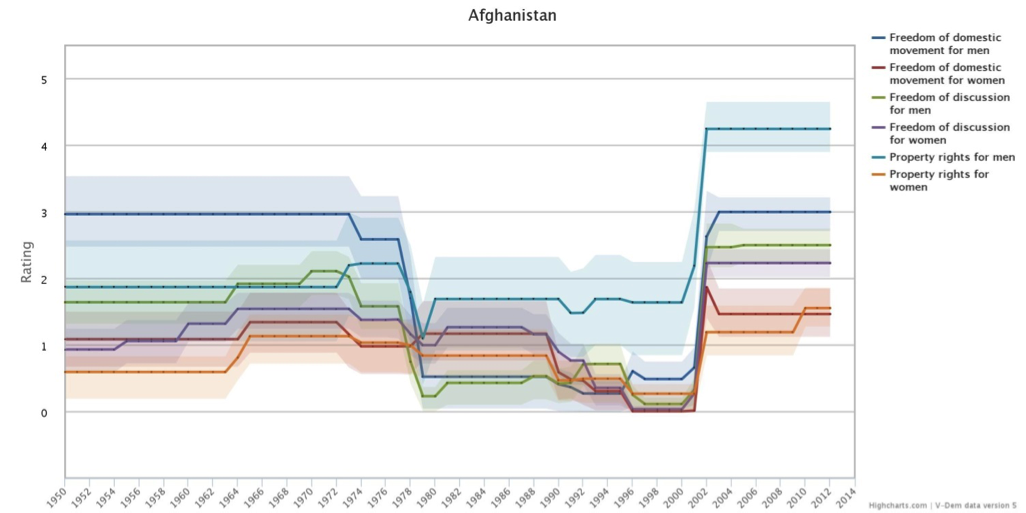International Women’s Day 2016
By: V-Dem Staff
Mar 08, 2016
The V-Dem dataset includes three sub- indices measuring various aspects of women’s rights: women civil liberties index, women civil society index and women political participation index. These are combined into the mid-level women political empowerment index. We also offer a range of indicators enabling comparisons between the rights of men and rights of women. In the graph below three such indicators are shown from 1950 to 2012 for Afghanistan, one of the most unequal countries of the world according to UNDP’s Gender Inequality Index.
The largest discrepancy between the levels in freedom for women and men, among the included indicators, is evident in terms of property rights. The score of 4 after year 2000 for men suggests that a majority of the men enjoy most private property rights although a small minority does not, whereas the score of close to 1 for women implies that certain women enjoy some private property rights, but most have none. Similarly, most men enjoy full freedom of movement with only a small minority facing restrictions, but only some women enjoy full freedom of movement to move across regions in the country, whereas most women are not able to do so. The smallest difference between the two groups can be noted in regards to freedom of discussion, where the country receives a score of between 2 and 3 for both women and men although there is still a small difference to take into account. This indicates that the right for both men and women to openly discuss political issues in private homes and in public spaces is somewhat respected. However, expressions of political opinions are occasionally exposed to intervention and harassment.


